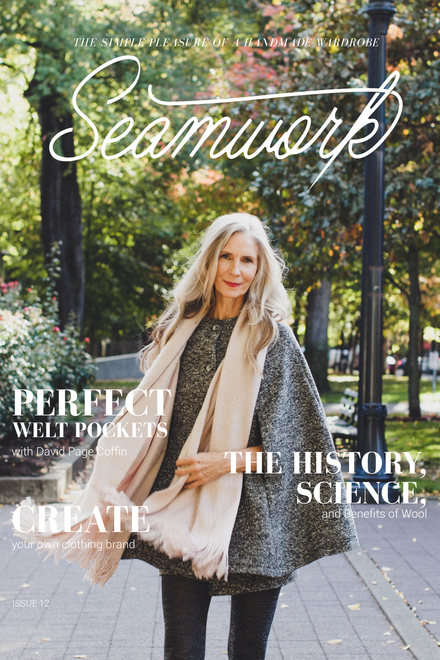Seamwork: The Little Magazine that Could
 In the age of digital media, readers have come to expect their information and entertainment for free.
In the age of digital media, readers have come to expect their information and entertainment for free.
Now don’t get me wrong, free content is great! I enjoy free content on blogs and websites every day; however, the growing expectation for content to be created for free places a great amount of pressure on writers and content creators. How can they give us the content we want for free while still being able to sustain their careers financially? This is not a good time to be in the magazine business, that's for sure.
And it's not just sewing, the rise of free content expectation effects every aspect of journalism, and it is greatly influencing the quality of content we receive as readers. Maybe it's not ethical for consumers to be demanding such things from professional content creators, but these are the challenges we currently face.
Content creators have two choices, they can argue how unfair their circumstance is, or they can adapt. In my opinion, it's much more valuable and constructive to discuss the latter.
So how can content creators make a living when readers expect everything to be available for free? Seamwork magazine, the brainchild of indie pattern star Colette, has come up with an interesting approach to solving this problem.
Seamwork is a monthly sewing magazine that costs readers $6 a month. They publish articles that cover topics in more depth than a blog post, often including interviews with sewing industry leaders. These articles are offered for free to everyone, regardless of whether they pay for a magazine subscription or not.
If they are giving their content away for free, how are they making money?
The ladies at Colette knew in order to get people to subscribe to their magazine, they needed to offer their readers something they couldn’t get for free, something that would be worth paying for. Colette discussed this problem with their fans in their weekly newsletter, and in the end they decided to include two free sewing patterns along with every month’s edition. These patterns are simple, easy to sew, and aren’t incredibly difficult for the Colette Team to design. Although the content of the magazine is free, the patterns are only available to readers with a monthly subscription.
Today marks Seamwork’s one year anniversary, and I believe that it’s safe to say that their magazine has been a huge success. In 12 months, Seamwork has expanded their services to include a podcast and a printed book. Looking back, it’s easy to see why this magazine has become such a hit, despite the fact that consumers are less willing to pay for the content they read than ever before.
Seamwork made the magazine model work for them when the paid news industry is failing by listening to their consumer. They know readers can get all the sewing news they want and need online for free, and made the wise choice not to compete with that. Instead, they offered their readers something worth paying for and are able to make money off of it!
Winners aren’t necessarily the people who are naturally the best, they’re the people that adapt the best to their environment. I’m sure there are other paid sewing magazines that offer even better articles than Seamwork, but it’s hard to argue that any other sewing magazine understands their customer's needs better than Seamwork. This is why Seamwork will survive in an industry that's failing.
The conflict between paid and free content is seen in every industry imaginable. Professional content creators are struggling to stay afloat amongst the massive amount of free content available online. I think in the future, we will start seeing more magazines and news sources adopting the Seamwork model for making money. If people are no longer willing to pay for the things they read, offer them something they are willing to pay for - It's business 101!
Remember, if you can’t change the game, change the way you play.
All images courtesy of Seamwork Magazine